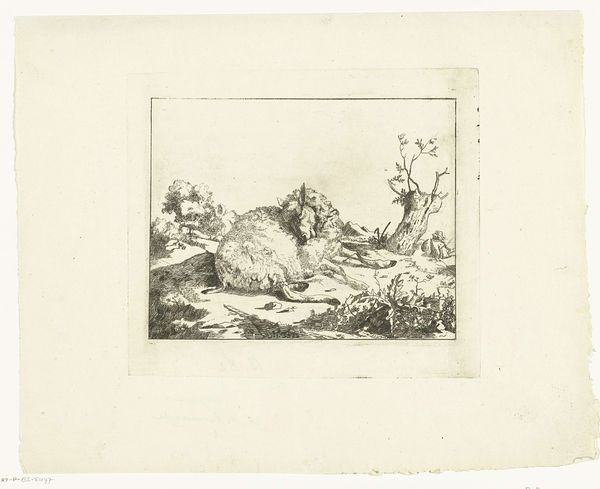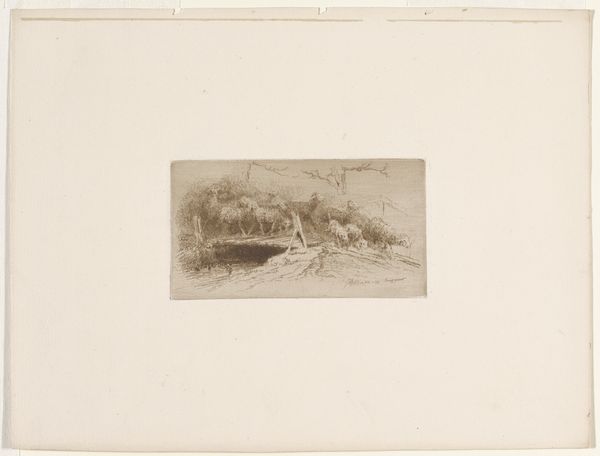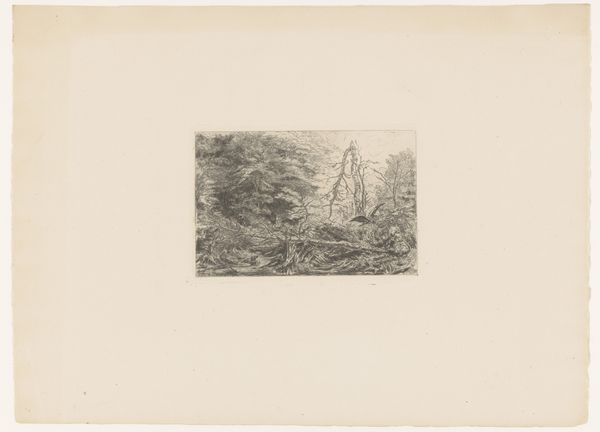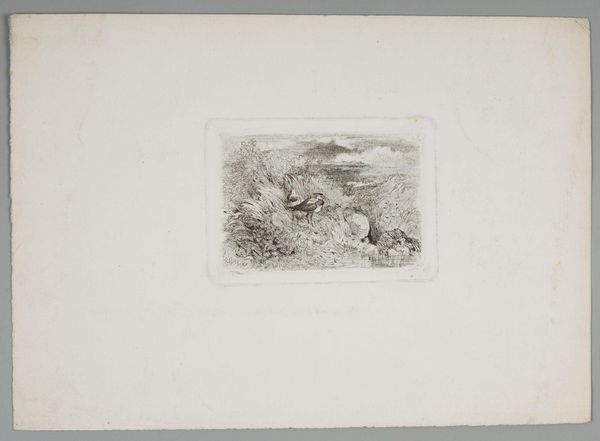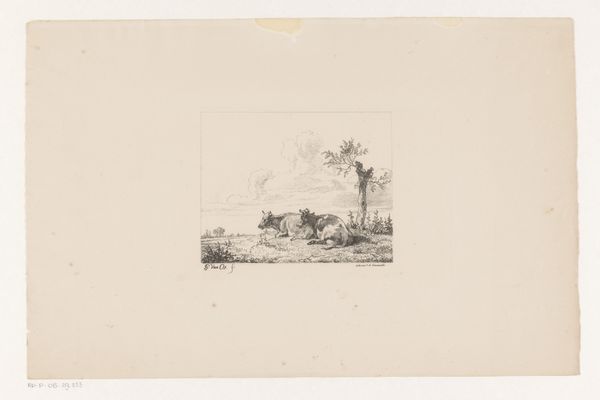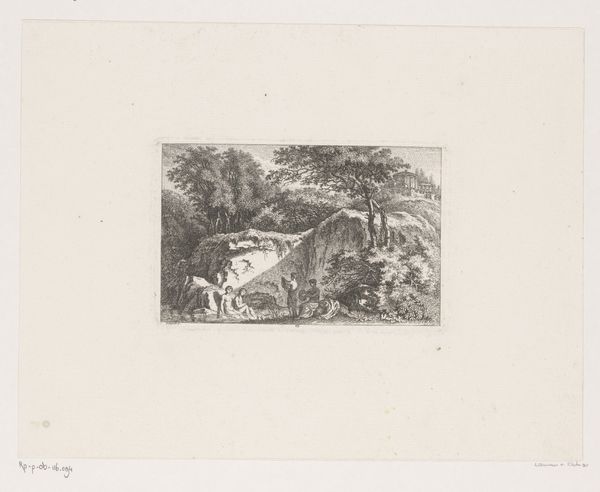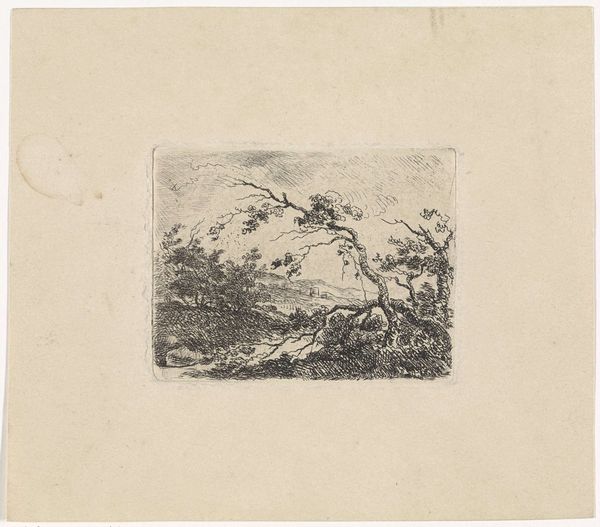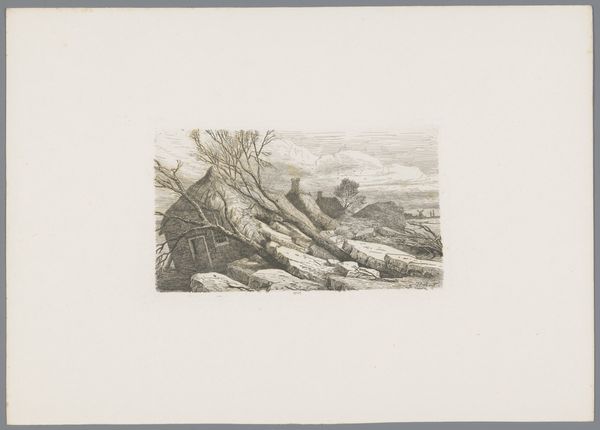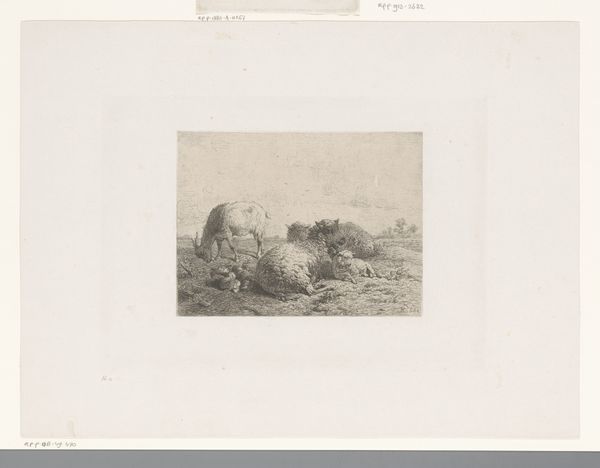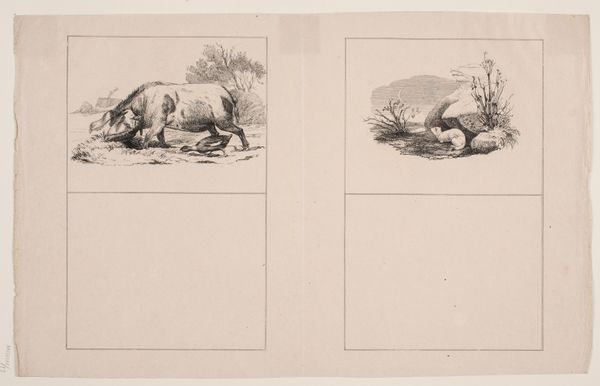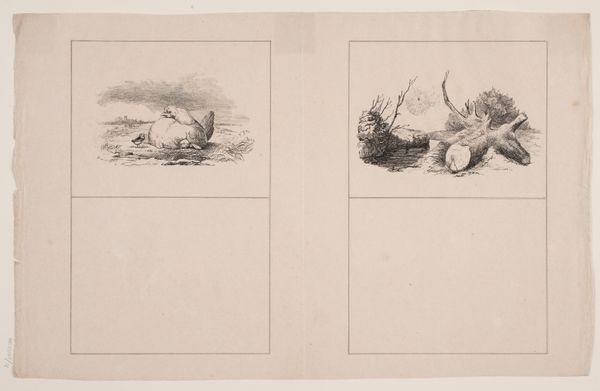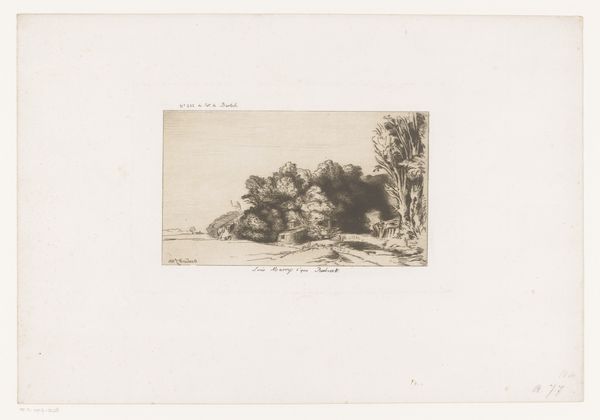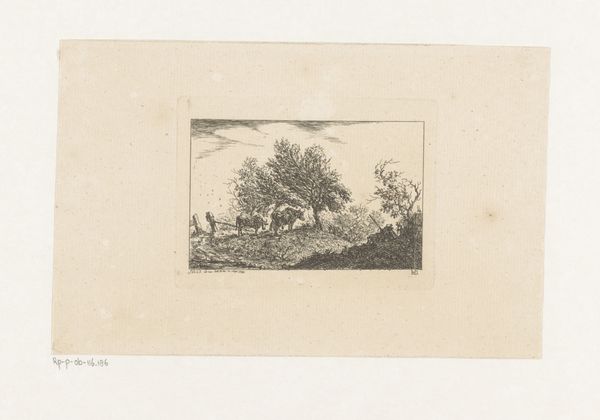
drawing, pencil
#
drawing
#
pencil sketch
#
landscape
#
pencil
#
realism
Dimensions: height 115 mm, width 142 mm
Copyright: Rijks Museum: Open Domain
Curator: Let's consider this pencil drawing, "Liggend schaap met twee lammeren" (Reclining Sheep with Two Lambs), made by Adam von Bartsch between 1803 and 1805. Editor: It has a very pastoral feel, almost dreamlike because of the soft pencil work. What do you see in this piece, beyond just a simple farm scene? Curator: The means of production interest me. Von Bartsch, though known for printmaking, chose a humble pencil. It speaks to the directness of observation, a working-class practicality. This was not meant, I think, as "high art" in its initial creation, but more as a study of resources – wool, meat, livelihood. Note how the textures of wool, the lay of the land, the sky, are meticulously observed but seemingly un-fussed over. It reflects a kind of labor. Don't you think? Editor: I hadn’t thought about it that way, but the focus on the textures and the work that wool provides certainly changes my view. So, is it a comment on rural labour? Curator: Perhaps. Or rather, it documents the material reality. Look at the land itself – is it romanticized? No. It is presented as the base material of agricultural production, not just an idyllic vista. The labour is embedded in the raw materials and the final goods it yields. This blurring of fine art with more utilitarian representations is part of what makes this sketch interesting. Editor: That's fascinating. So, by looking at the materials and how they are represented, we can gain a different understanding of the artwork’s purpose and the artist’s intent. Curator: Precisely. We look beyond aesthetic beauty and consider the socio-economic factors inherent to its creation and subject. Editor: Thank you for showing me a new approach. Now I notice how carefully he considered the placement and economy of marks to get the forms to pop-up, yet seemingly unfinished. Curator: And to me, that shows the means are always connected to the meaning, to the society of production.
Comments
No comments
Be the first to comment and join the conversation on the ultimate creative platform.

